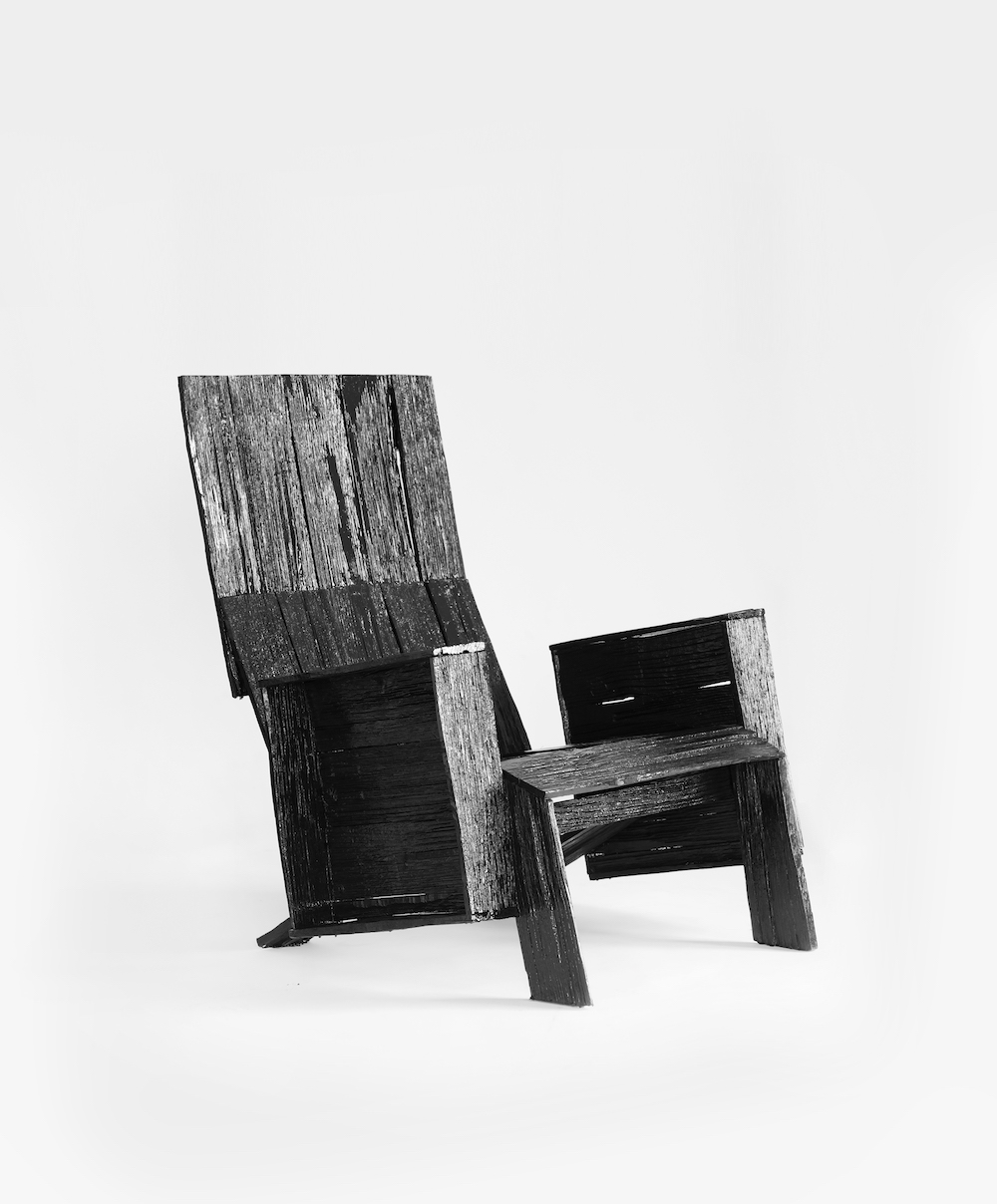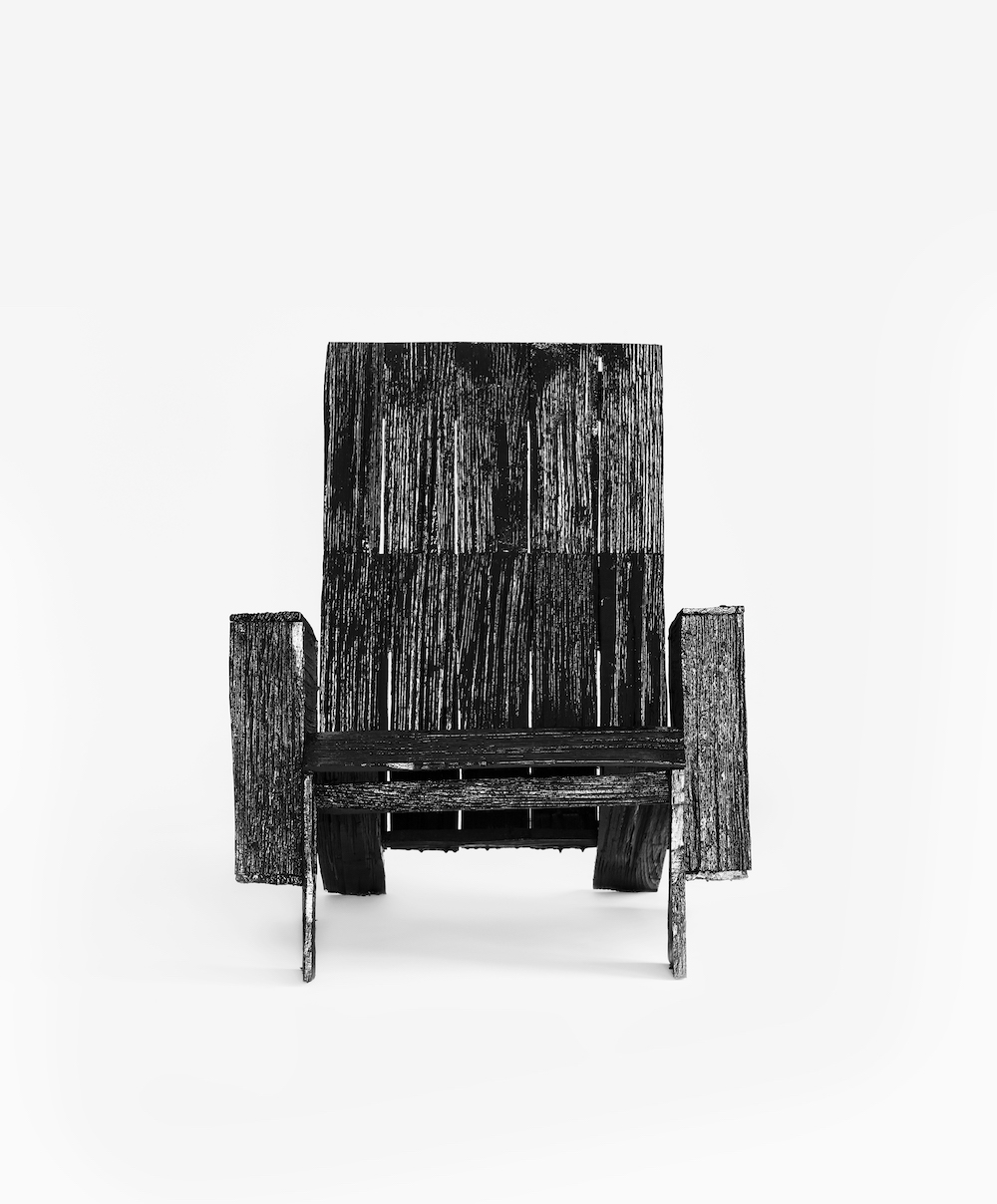Bois Fendu
2018. Châtaignier fendu, teinté à la suie de bois, vernis à l’ambre 25 couches.
Comment produire un objet en bois sans production de sciure poussiéreuse, néfaste pour l’ouvrier ?
Mon imaginaire s’intéresse aux outils anciens. Le “coin”, outil formant un tranchet en forme de V,
fend et sépare le bois en planches, sans provoquer de déchets. Prolongé d’un manche il devient une
hache, dont l’usage, au Moyen Âge, était préféré à la scie. Cette dernière martyrise les fibres, ce qui
affaiblit le bois. Le fendage, quant à lui, ne blesse pas le matériau et préserve ses vertus intrinsèques
en créant des planches d’une très belle expression plastique, légères et étanches. Tel fut le point de
départ de l’expérience japonaise à la Villa Kujoyama : produire un design brut, sans poussière.
H. 85 x L. 73 x Pr. 85 cm
13 Kg.
Dans les collections du MAD – Musée des Arts Décoratifs.
2018. Split chestnut, stained with wood soot, varnished with 25 coats of amber.
How to produce a wooden object without producing dusty sawdust, which is harmful to the worker? My imagination is interested in old tools. The « wedge », a tool forming a V-shaped slice, splits and separates the wood into planks, without causing waste. Extended by a handle, it becomes an axe which, in the Middle Ages, was preferred to the saw. The latter martyrates the fibres, which weakens the wood. Splitting, on the other hand, does not harm the material and preserves its intrinsic virtues creating boards with a beautiful plastic expression, light and watertight. This was the starting point of the Japanese experiment at Villa Kujoyama: to produce a raw, dust-free design.
H. 85 x W. 73 x D. 85 cm
13 Kg.
In the collections of the MAD – Musée des Arts Décoratifs.


